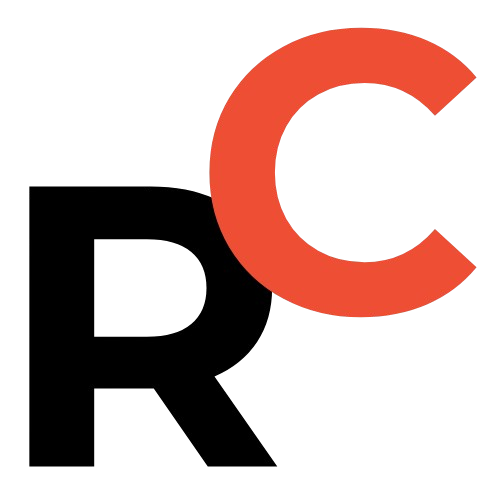Key Points
- The Chinese polysilicon market is undergoing an “anti-involution” crackdown with rules like no sales below cost price, following 14 months of operating below average cost.
- Oriental Hope Group (Dongfang Xiwang 东方希望), a major polysilicon producer, issued a strong denial against rumors they sold material for ¥37,000 RMB ($5,100 USD) per ton, stating they have not sold below cost since July.
- Current market prices for N-type polysilicon re-cast material average ¥41,700 RMB ($5,700 USD) per ton, a 12.4% jump from the previous week, indicating market recovery.
- Oriental Hope (Dongfang Xiwang 东方希望) has a significant competitive advantage due to its diversified operations and ownership of power plants, resulting in some of the lowest production costs in the industry.
- Founder Liu Yongxing (刘永行) designed Oriental Hope’s polysilicon business to be self-financed, not listed or reliant on external funding, enabling it to withstand market volatility and target profitability even at low prices like ¥30,000 RMB ($4,100 USD).

The global polysilicon market is on edge, and the rumor mill is in full swing as China’s photovoltaic (PV) industry attempts a massive “anti-involution” crackdown.
At the center of the storm is Oriental Hope Group (Dongfang Xiwang 东方希望), a polysilicon titan, which just dropped a heavy-handed statement denying explosive allegations of illegal price undercutting.
The “Gossip” That Shook the Solar Supply Chain
Let’s break down the drama.
The PV industry, especially the silicon segment, has been in a world of hurt.
We’re talking over 14 straight months of operating below the industry’s average cost due to a gnarly supply-demand imbalance.
In response, Chinese authorities stepped in this July, pushing for an “anti-involution” truce.
This means stricter enforcement of:
- Production cuts
- Output controls
- A hard rule: no sales below cost price
Naturally, in this high-stakes environment, everyone is watching prices like a hawk.
Then, the “gossip” started flying on social media.
Whispers of a “traitor in the photovoltaic anti-involution” emerged, pointing fingers directly at Oriental Hope (Dongfang Xiwang 东方希望).
The claim? That the company sold a batch of dense re-cast material for a jaw-droppingly low ¥37,000 RMB ($5,100 USD) per ton.
The rumors even suggested the company had likely been reported to the authorities.

Resume Captain
Your AI Career Toolkit:
- AI Resume Optimization
- Custom Cover Letters
- LinkedIn Profile Boost
- Interview Question Prep
- Salary Negotiation Agent

Oriental Hope’s Official Statement: “Not Happening”
On July 19, Oriental Hope (Dongfang Xiwang 东方希望) didn’t just deny the rumors; they came out swinging.
In a formal statement, the company made its position crystal clear:
- Cooperating with Authorities: They’ve been working with national authorities and on-site inspections to support healthy industry development.
- Following the Rules: They are diligently sticking to self-regulatory agreements, including production cuts and output limits.
- The Big Denial: The company stated it has not made any sales below its cost price since July and all its activities are legal and compliant.
- Lawyers Are Watching: Their legal team has already preserved evidence against what they call “false online information” and have reserved the right to sue.
They also called on industry peers to resist “unfair competition practices” and “speculative炒作 in polysilicon futures.”

The Brutal Economics of Polysilicon Production Right Now
So, what’s a “normal” price these days?
The market is tight, and prices have actually been climbing week-over-week, thanks to the production controls.
According to the Silicon Industry Branch of the China Nonferrous Metals Industry Association (Zhongguo Youse Jinshu Gongye Xiehui Guanye Fenhui 中国有色金属工业协会硅业分会), this week’s numbers look like this:
- N-type Polysilicon Re-cast Material: ¥40,000 – ¥49,000 RMB ($5,500 – $6,700 USD) per ton.
Average price: ¥41,700 RMB ($5,700 USD) per ton (a 12.4% jump from last week). - N-type Granular Silicon: ¥40,000 – ¥45,000 RMB ($5,500 – $6,200 USD) per ton.
Average price: ¥41,000 RMB ($5,600 USD) per ton (a 15.2% jump from last week).
The price range exists because some players have insane cost advantages (like their own power plants), letting them sell on the lower end.
Others face higher costs but can command higher prices due to premium quality and a reputation for stable supply.
Oriental Hope’s Secret Weapon: The Cost Advantage
This is where it gets really interesting for investors and founders.
Oriental Hope (Dongfang Xiwang 东方希望), founded by the low-profile billionaire Liu Yongxing (Liu Yongxing 刘永行), is a BEAST.
It’s one of the top five global polysilicon players (CR5) with a massive 500,000-ton annual production capacity.
Crucially, it’s the only non-listed company among the “Silicon Five Tigers.”
The company is a diversified giant, with operations in mining, power generation, aluminum, cement, chemicals, and even agriculture.
This diversification is their superpower.
The biggest expenses in polysilicon production are energy, depreciation, and raw materials, with energy being #1.
By leveraging its own power plants and strategically located production bases, Oriental Hope (Dongfang Xiwang 东方希望) has one of the lowest production costs in the entire industry.
So, when they say they aren’t selling “below cost,” it doesn’t mean they’re selling at the same price as everyone else. It just reinforces that their cost basis is incredibly, perhaps unbeatable, low.
- ✔️ Diversified Operations: Reduces reliance on single market.
- ✔️ Ownership of Power Plants: Significantly lowers energy costs (largest expense).
- ✔️ Strategic Location: Proximity to raw materials and markets.
- ✔️ Non-listed Company: Not beholden to short-term market pressures or external financing.
- ✔️ Self-financed Growth: Uses profits from other divisions to fund polysilicon, allowing long-term strategy.
- ✔️ Lowest Production Costs: Key competitive differentiator enabling profitability at lower prices.
The Long Game: A Founder’s “Rational” Philosophy
Founder Liu Yongxing (Liu Yongxing 刘永行) laid out his philosophy back in a 2021 interview with The Paper (Pengpai Xinwen 澎湃新闻).
“Since we plan to be in this for the long run, we need to be rational,” he said.
He remembered when polysilicon prices were over $400 USD per kilogram over a decade ago. While others rushed in, his team ran the numbers on an “extreme” cost-reduction model.
Their targets were wild:
- Be able to operate without stopping production even if the price hits ¥30,000 RMB ($4,100 USD).
- Be profitable at ¥50,000 RMB ($6,900 USD).
- Consider ¥70,000 RMB ($9,600 USD) a “normal” price.
To control risk and play the long game, Liu Yongxing (Liu Yongxing 刘永行) made a key decision: the polysilicon business would never be listed and would not rely on outside financing.
His strategy? “We use the net profits and cash flows from our other 10+ industries to support this industry.”
This approach allows Oriental Hope (Dongfang Xiwang 东方希望) to weather market storms that would crush publicly-traded, debt-leveraged competitors. It’s a fascinating case study in building a resilient, long-term business in a volatile market.
As the industry-wide truce holds, the market will be watching to see if this low-cost leader can maintain discipline while still leveraging its unique advantages in the global polysilicon business.

Find Top Talent on China's Leading Networks
- Post Across China's Job Sites from $299 / role, or
- Hire Our Recruiting Pros from $799 / role
- Qualified Candidate Bundles
- Lower Hiring Costs by 80%+
- Expert Team Since 2014
Your First Job Post


![Microsoft Market Cap Explodes by ¥1.6 Trillion RMB Overnight, While Apple Stock Takes a Hit Post-Earnings [FreshFromChina]](https://freshfromchina.com/wp-content/uploads/2025/05/Microsoft_Market_Cap_Explodes_by_1.6_Trillion_RMB_Overnight__While_Apple_Stock_Takes_a_Hit_Post-Earnings____FreshFromChina-150x150.png)

![Kweichow Moutai Talks Growth, Maotai 1935 Sales, and Global Plans: Key Takeaways from the 2024 Earnings Call [FreshFromChina]](https://freshfromchina.com/wp-content/uploads/2025/05/Kweichow_Moutai_Talks_Growth_Maotai_1935_Sales_and_Global_Plans_Key_Takeaways_from_the_2024_Earnings_Call_TeamedUpChina-150x150.png)

